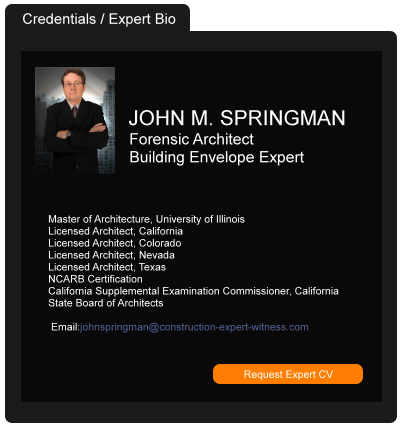Newmeyer Dillion Partner Louis "Dutch" Schotemeyer Named One of Orange County's 500 Most Influential by Orange County Business Journal
January 25, 2021 —
Newmeyer DillionProminent business and real estate law firm Newmeyer Dillion is pleased to announce that partner
Louis "Dutch" Schotemeyer has been selected to the Orange County Business Journal's fifth annual "OC 500 Directory of Influence" list. The 2020 list recognizes the 500 most influential leaders who have made a positive mark on Orange County's business community over the last year.
Located in the Newport Beach office, Schotemeyer's practice areas include, Real Estate Litigation, Construction Operations and Litigation, Business Litigation and Labor & Employment. Additionally he provides risk management and legal advice to companies without dedicated in-house legal counsel. A seasoned litigator, he leverages his litigation experience to advise clients, including C-Level executives, regarding potentially litigious situations that touch their business operations and his practice areas.
"Dutch's deep knowledge and experience as in-house counsel has informed his business-first approach to complex legal disputes and made him an invaluable resource to the Orange County business community," said Firm Managing Partner Paul Tetzloff. "We are pleased that Dutch's contributions to the community have been recognized by Orange County Business Journal."
Schotemeyer
rejoined the firm in September after serving as Vice President and Associate General Counsel for William Lyon Homes, Inc., and Vice President and Deputy General Counsel for Taylor Morrison. While at William Lyon Homes, he was named 2019 "General Counsel Rising Star" by the Orange County Business Journal.
The full "OC 500 Directory of Influence" list was distributed in a special December supplement.
About Newmeyer Dillion
For over 35 years, Newmeyer Dillion has delivered creative and outstanding legal solutions and trial results that achieve client objectives in diverse industries. With over 60 attorneys working as a cohesive team to represent clients in all aspects of business, employment, real estate, environmental/land use, privacy & data security and insurance law, Newmeyer Dillion delivers holistic and integrated legal services tailored to propel each client's operations, growth, and profits. Headquartered in Newport Beach, California, with offices in Walnut Creek, California and Las Vegas, Nevada, Newmeyer Dillion attorneys are recognized by The Best Lawyers in America©, and Super Lawyers as top tier and some of the best lawyers in California and Nevada, and have been given Martindale-Hubbell Peer Review's AV Preeminent® highest rating. For additional information, call 949.854.7000 or visit www.newmeyerdillion.com.
Read the court decisionRead the full story...Reprinted courtesy of
"Your Work" Exclusion Bars Coverage for Contractor's Faulty Workmanship
December 02, 2015 —
Tred R. Eyerly – Insurance Law HawaiiThe West Virginia Supreme Court of Appeals found there was no coverage for the contractor's faulty workmanship in constructing a home. State of W. Virginia ex rel. Nationwide Mut. Ins. Co. v. The Honorable Ronald E. Wilson, 2015 W. Va. LEXIS 963 (W. Va. Oct. 7, 2015).
In July 2009, Fred Hlad contracted to build a home for the Nelsons and complete construction by November 2009. The Nelsons sued when the house was not timely completed. Nationwide defended under a reservation of rights, but then filed a declaratory judgment action.The circuit court denied Nationwide's request for declaratory relief, determining that the defective workmanship was an "occurrence." Nationwide petitioned the Supreme Court for a writ of prohibition.
On appeal, Nationwide argued that eight of the nine counts in the Nelsons' complaint were not caused by his defective workmanship. These allegations included breach of contract claims and intentional torts. Nationwide submitted it was not obligated to indemnify Hlad for damages that may be recovered on those counts. The court agreed that Nationwide's duty to indemnify was limited only to those claims that triggered coverage. Accordingly, Nationwide had no duty to indemnify for the eight counts alleging breach of contract and intentional torts.
Read the court decisionRead the full story...Reprinted courtesy of
Tred R. Eyerly, Insurance Law HawaiiMr. Eyerly may be contacted at
te@hawaiilawyer.com
Condo Board Goes after Insurer for Construction Defect Settlement
February 07, 2013 —
CDJ STAFFThe City Bella on Lyndale homeowners association settled with the high rise's developer and builder for $1.9 million over construction defects. The defects included structural deterioration in the project's pool area, extensive air and water leaks in the windows, and structural problems in the project's underground parking garage. City Bella consists of a 15-story tower and a four-story building on Lyndale Avenue in Minneapolis.
They settled the lawsuit in 2011, but the homeowners association is still looking to the insurers to pay up. With legal fees and interest, the total rises to $2.82 million that Travelers could be paying the association.
Read the court decisionRead the full story...Reprinted courtesy of
Real Estate & Construction News Roundup (7/17/24) – Housing Inflation to Remain High, Proptech Investment to Fall and Office Vacancy Rates to Reach Peak in 2025
August 26, 2024 —
Pillsbury's Construction & Real Estate Law Team - Gravel2Gavel Construction & Real Estate Law BlogIn our latest roundup, construction backlog to see positives signs, regional banks to be conservative on buybacks, U.S. metro areas to permit few new housing units, and more!
- Venture capital investments in proptech and adjacent companies fell 14.3% in the first half of the year. (Leslie Shaver, Multifamily Dive)
- The expectation of interest rate cuts by the Federal Reserve later this year due to easing inflation and cooling economic growth is a positive sign for construction backlog. (Sebastian Obando, Construction Dive)
- The U.S. office real estate sector is now in three markets, each with different performance, but the overall office vacancy rate will reach a 21.6% peak in the second half of 2025. (Nish Amarnath, Construction Dive)
Read the court decisionRead the full story...Reprinted courtesy of
Pillsbury's Construction & Real Estate Law Team
New York Appellate Team Obtains Affirmance of Dismissal of Would-Be Labor Law Action Against Municipal Entities
August 12, 2024 —
Lewis Brisbois NewsroomNew York, N.Y. (July 11, 2024) - In Charlot v. City of New York, ___ A.D.3d ___, 2024 NY Slip Op 03161 (2d Dep’t 2024), New York Associate Dean Pillarella, a member of the Appellate Practice, recently obtained an affirmance of the lower court’s dismissal of the plaintiff’s action against the City of New York (“the City”) for failure to timely serve a notice of claim. New York Partner Meghan Cavalieri, a member of the Construction Practice, and her team authored and argued the initial motion to dismiss.
The plaintiff alleged to have sustained injuries as a result of a construction-site accident on December 8, 2020, on City-owned property in the course of the construction of a school by the New York City School Construction Authority. N.Y. General Municipal Law (“GML”) § 50-e(1)(a), requires service of a notice of claim within 90 days after the claim arises as a condition precedent to the commencement of a tort action. The plaintiff served no notice of claim until June 2021 and commenced an action in January 2022, alleging violations of N.Y. Labor Law §§ 240(1), 241(6), and 200. Given the plaintiff’s failure to comply with GML § 50-e(1)(a), Meghan and her team rejected the notices of claim as untimely. The plaintiff then moved for leave to deem the notices of claim timely served nunc pro tunc. In response, Meghan and her team opposed the motion and cross-moved to dismiss the action.
Read the court decisionRead the full story...Reprinted courtesy of
Lewis Brisbois
Where Breach of Contract and Tortious Interference Collide
July 18, 2022 —
Christopher G. Hill - Construction Law MusingsClaims for breach of contract are numerous in the construction law world. Without these claims we construction attorneys would have a hard time keeping the doors open. A 2021 case examined a different sort of claim that could arise (though, “spoiler alert” did not in this case) during the course of a construction project. That type of claim is one for tortious interference with business expectancy.
In Clark Nexsen, Inc. et. al v. Rebkee, the U. S. District Court for the Eastern District of Virginia gave a great explanation of the law of this type of claim in analyzing the following basic facts:
In 2018, Clark Nexsen, Inc. (“Clark”) and MEB General Contractors, Inc. (“MEB”) responded to Henrico County’s (“Henrico”) Request for Proposals (“RFP”) for the design and construction of a sport and convocation center (the “Project”). Henrico initially shortlisted Clark and MEB as a “design-build” team for the Project, but later restarted the search, issuing a second RFP. Clark and MEB submitted a second “design-build” proposal, but Henrico selected Rebkee Co. (“Rebkee”) for certain development aspects of the Project. MEB also submitted proposals to Rebkee, and Rebkee selected MEB as the design-builder for the Project. MEB, at Rebkee’s request, solicited proposals from three design firms and ultimately selected Clark as its design partner. From December 2019 to May 2020, Clark and MEB served as the design-build team to assist Rebkee in developing the Project. In connection therewith, Clark developed proprietary designs, technical drawings, and, with MEB, several cost estimates. In February 2020, MEB submitted a $294,334.50 Pay Application to Rebkee for engineering, design, and Project development work. Rebkee never paid MEB. Henrico paid MEB $50,000.00 as partial payment for MEB’s and Clark’s work. MEB then learned that Rebkee was using Clark’s drawings to solicit design and construction proposals from other companies. On July 23, 2020, Rebkee told MEB that Henrico directed it to cancel the design-build arrangement with MEB and Clark and pursue a different planning method. MEB and Clark sued and Rebkee for, among other claims, tortious interference with a business expectancy. Rebkee moved to dismiss the tortious interference claim.
Read the court decisionRead the full story...Reprinted courtesy of
The Law Office of Christopher G. HillMr. Hill may be contacted at
chrisghill@constructionlawva.com
Team Temporarily Stabilizes Delaware River Bridge Crack
February 02, 2017 —
Justin Rice - Engineering News-RecordThe team temporarily stabilizing the Delaware River Bridge and planning its permanent repair also are trying to find a precedent for the bridge’s uncommon fracture. Connecting the Pennsylvania and New Jersey turnpikes, the 61-year-old symmetrical truss bridge was shut down indefinitely on Jan. 20, when a complete fracture in a steel truss was discovered below the bridge deck.
Read the court decisionRead the full story...Reprinted courtesy of
Justin Rice, ENRMr. Rice may be contacted at
ricej@enr.com
Northern District of Mississippi Finds That Non-Work Property Damages Are Not Subject to AIA’s Waiver of Subrogation Clause
July 11, 2018 —
Shannon M. Warren - The Subrogation StrategistIn recent months, the Northern District of Mississippi has grappled with how to interpret waivers of subrogation in American Institute of Architects (AIA) construction industry contracts and, specifically, how they apply to work versus non-work property. The distinction between work and non-work property has been commonly litigated and remains a hotly debated topic when handling subrogation claims involving construction defects.
In Liberty Mutual Fire Ins. Co. v. Fowlkes Plumbing, 2018 U.S. Dist. LEXIS 23515 (February 12, 2018), a fire consumed the entire insured risk when one of the defendants was performing window restoration services. Subsequently, the insured’s subrogated insurer filed suit against several defendants involved in the construction project at issue. In response to the defendants’ motion for summary judgment, the District Court for the Northern District of Mississippi considered whether the waiver of subrogation clause in AIA contract form A201-2007 precluded the subrogated insurer from recovering damages from the defendants. The court held that the waiver of subrogation provision contained in AIA document A201-2007 barred the insurer from recovering for damages to the work itself, but did not apply to non-work property.
Read the court decisionRead the full story...Reprinted courtesy of
Shannon M. Warren, White and Williams LLPMs. Warren may be contacted at
warrens@whiteandwilliams.com


































































